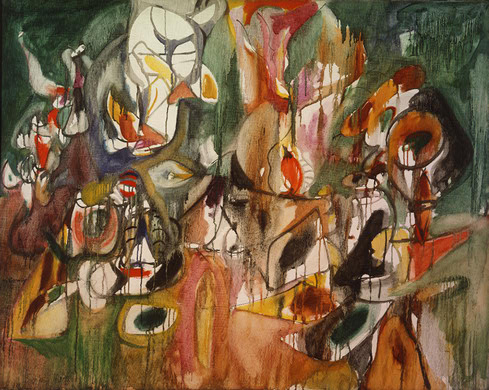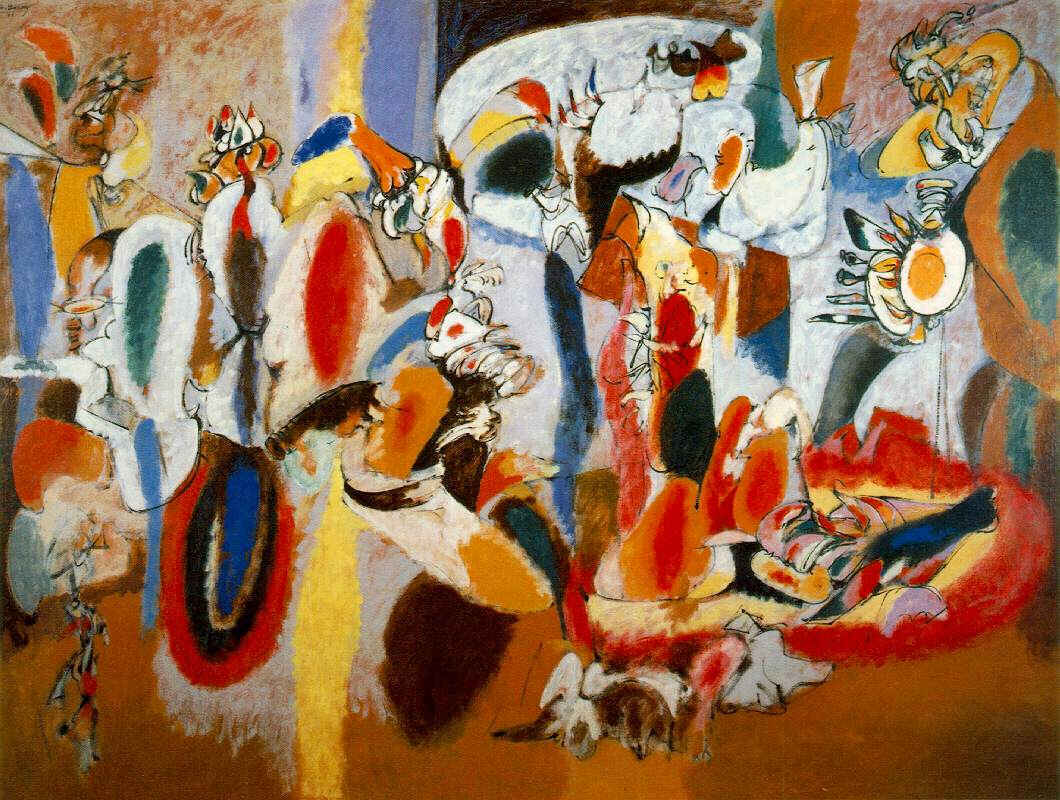
I like this one, got into this today after listening to this interview:
Matthew Gale interviewed about Arshile Gorky on RNZ Nights
Tate Modern| Current Exhibitions | Arshile Gorky. (dead Link)
The link above also has a video – worth watching.
https://www.tate.org.uk/art/artists/arshile-gorky-1191
This one has Audio
“The most important figure in American Art before J.Pollock” – The Daily Telegraph.
Article follows.
This exhibition celebrates the extraordinary life and work of Arshile Gorky (c.1904-1948). Along with Rothko, Pollock and de Kooning, Gorky was one of the most powerful American painters of the twentieth century, and a seminal figure in the formation of Abstract Expressionism. The exhibition includes paintings and drawings from across his career, and a handful of rarely seen sculptures.
The Armenian-born artist first arrived in the US in 1920 fleeing persecution in his home country. He adopted the name Arshile Gorky with reference to the Russian writer Maxim Gorky. First in Boston and, after 1924, then in New York, he studied the Modern European masters in books and galleries, teaching himself art by combining this with art classes. His early still-lives show his reliance upon the examples of Cezanne, Picasso and others, but his portraits in the 1920s and 1930s, especially the two versions of The Artist and His Mother, show how Gorky was able to pour his personal experiences and his studies into a highly individual realism.
During the 1940s Gorky encountered Surrealists exiled from wartime Europe. Stimulated by their ideas of free flowing, automatic painting, he rapidly developed the style for which he became famous. Works such as Waterfall 1943 are evocative, layered, and translucent, with a liquid glowing quality. Gorky’s characteristic paintings of this final period include biomorphic forms in strong colours, shifting abstract elements and the energetic line that he developed in his drawings. They capture a sensual enjoyment of landscape as well as the mood and memories that the subjects can evoke. Just as he came to be seen as a leading figure in Abstract Expressionism, his career was cut short by a series of personal tragedies, which ended with him committing suicide in 1948.

